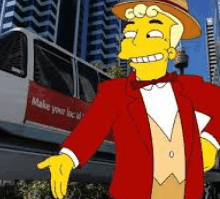
Former infrastructure and transport minister, Anthony Albanese, is the latest to jump on the high speed rail (HSR) bandwagon, writing a spirited article in The Guardian over the long weekend entitled No ifs, no buts: Australia needs high speed rail:
High-speed rail would revolutionise interstate travel, and would also be an economic game-changer for dozens of regional communities along its path. That’s why the politicians need to exercise vision, and think way beyond the current political cycle…
The passage of time is likely to make high-speed rail more and more desirable, making it critical that politicians of today think ahead to tomorrow… Even now, a three-hour train trip from Sydney to Melbourne is competitive with flying on what is the fourth busiest route in the world when one takes into account travelling to and from the airports and waiting times. Then there are the regional development opportunities for communities along the railway line like the Gold Coast, Newcastle, Wagga Wagga, Albury-Wodonga, and Shepparton.
I don’t know what it is about the word “rail” that prevents logical and dispassionate analysis. In any number of ways, a HSR line linking the East Coast capitals makes little sense on either economic or social grounds. Let’s consider the main issues.
Cost:
In Europe and Asia, with high density populations, HSR can work well. But in a large, sparsely-populated country like Australia, it makes little sense.
It is around 2000 kilometres Melbourne to Brisbane. Even if we assume that the population doubles by 2050, then we are still only looking at a catchment of around 22 million people along the route, versus hundreds of millions in Europe or Asia. Put simply, finances will never work on this project
Indeed, the Stage 2 feasibility study, which was completed in April 2013 by the High Speed Rail Advisory Group (the body tasked by the former Labor Government with overseeing the eventual building of a high speed rail line) found a high-speed rail link along the East Coast would cost taxpayers a whopping $114 billion (in 2012 dollars). That’s a price tag of nearly $5,000 per man women or child, or nearly $9,800 per employed person.
Further, to be competitive with air travel, ticket prices would need to be at least comparable with a discount plane ticket – say $100 between Melbourne and Sydney. This means it would be highly unlikely that HSR would ever be able to pay back, or even significantly offset, its cost of construction, with ongoing operational subsidies also likely as far as the eye can see.
Convenience:
Albanese’s claims about the convenience of HSR are also spurious. The route between Melbourne and Sydney is roughly 900 kilometres, which would require an average travel speed of around 300 kilometres per hour to make it within the claimed three hours.
However, Albanese also contradictorily notes that HSR would be a game changer for regional communities along the route, suggesting that the train would need to stop at these locations. But the more stops that are included in the route, the slower the trip, making the three hour promise little more than a pipe dream.
For example, if the HSR train stopped just six times between Melbourne and Sydney, it could add up to one hour to the trip, assuming 10 minutes per station (including slow down, boarding, and acceleration times). If this was the case, then the Melbourne to Sydney HSR journey would slow to four hours, making it even less competitive against air travel.
Further, some of the time savings noted by Albanese are spurious. He mentions airport travel and waiting times as costs disadvantaging air travel, but conveniently ignores the time and cost associated with traveling to/from the CBD to board HSR (most of us don’t live near the CBD, after all).
Equity:
HSR is not mass transit. It is corridor transit. At best, it is a niche market serving predominantly a highly specialised, relatively wealthy, and narrow customer base (i.e. high-income business travelers and tourists). It will do little to relieve urban traffic congestion and its contribution to improving air quality (or reducing carbon emissions) will be negligible because it is unlikely to carry enough riders to make a major difference. These factors undermine HSR justifications based on public good arguments.
For $114 billion, Australia could probably fix-up most of the infrastructure in Australia’s cities and major towns, and/or build world class freight infrastructure, providing a much bigger productivity pay-off in the process, whilst also improving living standards for a wider share of the population.
Moreover, why should residents in Adelaide, Northern Queensland, Darwin, Alice Springs, Hobart, Perth, or a range of other regional towns be called upon to fund (via their taxes) a massively expensive project that provides no benefit to them and minimal (if any) productivity benefit to the nation?
Sound infrastructure investment is all about weighing-up alternatives and choosing projects that deliver the biggest social/productivity pay-offs per dollar spent. HSR looks likely to fail this most basic test, and smells like another one of those dubious big ticket pet projects that politicians and greenies love, but leaves taxpayers and the economy significantly worse-off.
It is exactly the opposite of what Australia needs if it is to rebuild its competitiveness.

